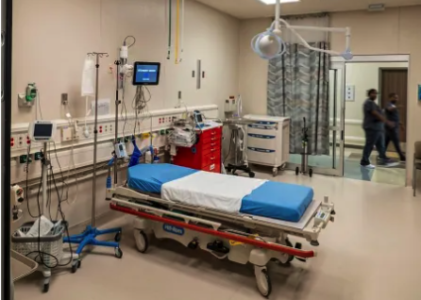
My recent move to the UK has revealed several insights about the healthcare system here. I’ll write a detailed comparison with the Indian system in another post; this one focuses primarily on the UK’s approach.
The Emergency Department (ED), or A&E as it’s known in the UK, throbs with an energy all its own. Adrenaline pumps and split-second decisions are commonplace. Emergency medicine doctors are the consummate first responders on the frontline, treating a wide spectrum of patients – from a child with a suspected broken arm to an elderly person experiencing chest pain, to a young adult with a potentially life-threatening allergic reaction. The key for the emergency medicine team is to quickly assess each patient’s urgency using a well-established triage system, prioritizing the most critical cases first.
A High-Pressure Puzzle
A typical shift in a UK A&E can be a whirlwind. The waiting room is a microcosm of society’s health concerns, and navigating this diverse landscape is a constant challenge. Long wait times and staffing shortages are ongoing pressures on the NHS, the UK’s National Health Service. But within these constraints, emergency medicine teams work tirelessly to deliver the best possible care. They act as detectives, piecing together a patient’s medical puzzle through history taking, physical examinations, and diagnostic tests – all while keeping a watchful eye on critically ill patients who require immediate intervention.
Innovation at the Forefront
Despite the challenges, the UK is a hotbed of emergency medicine innovation. The National Institute for Health and Care Excellence (NICE) provides vital evidence-based guidelines for emergency care, ensuring a standardized approach to treatment across the country. The Royal College of Emergency Medicine (RCEM) champions best practices and sets high standards for the specialty, fostering a culture of continuous improvement.
Beyond the A&E Walls
While the A&E is often the first point of contact for emergencies, it’s important to recognize the wider network of urgent care services available within the NHS. Understanding how to access these services, such as walk-in clinics or GP surgeries offering extended hours, can help alleviate pressure on A&E departments and ensure patients receive the right care in the right setting.
Empowering Patients
Knowledge is power, especially when it comes to your health. Here are some steps you can take to be prepared for a potential A&E visit:
- Know your local NHS services: Familiarize yourself with urgent care options outside of A&E for less critical situations. This can help you choose the most appropriate setting for your needs and reduce wait times in the A&E.
- Maintain a well-stocked first-aid kit at home: This can help you manage minor injuries at home and avoid unnecessary trips to A&E.
- Keep a list of your medications and allergies: Having this information readily available is crucial for emergency department staff, especially if you’re unable to communicate effectively due to illness or injury.
Looking Ahead: A Brighter Future
The future of emergency medicine in the UK is focused on efficiency, reduced wait times, and attracting more talented doctors to the specialty. Technological advancements like telemedicine, which allows remote consultations with specialists, hold promise for streamlining care and improving access to expertise in rural areas.
Emergency medicine in the UK is a demanding but rewarding field. The dedication and expertise of these healthcare professionals ensure that everyone has access to high-quality emergency care, 24 hours a day, 7 days a week. The next time you hear the sirens wail, take a moment to appreciate the remarkable team behind those flashing lights, who are always ready to answer the call.







